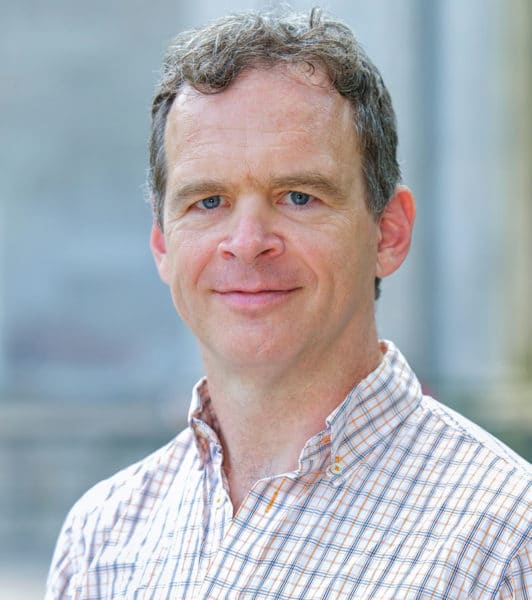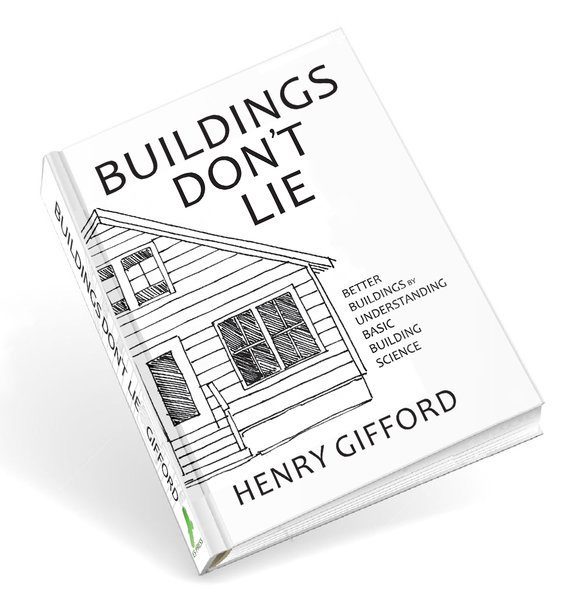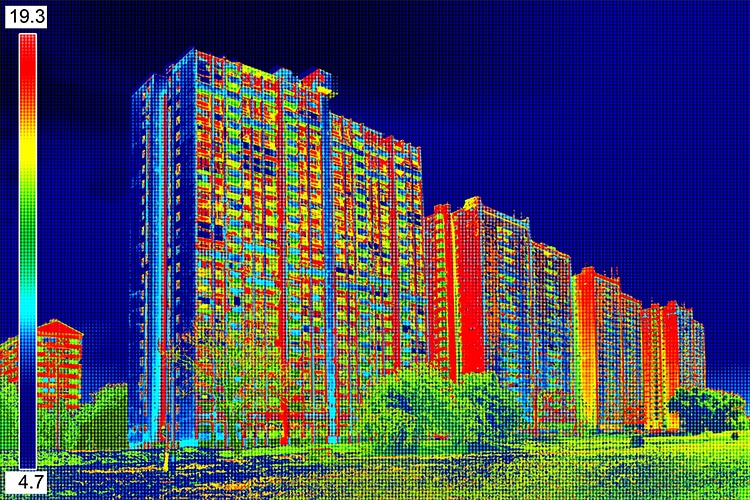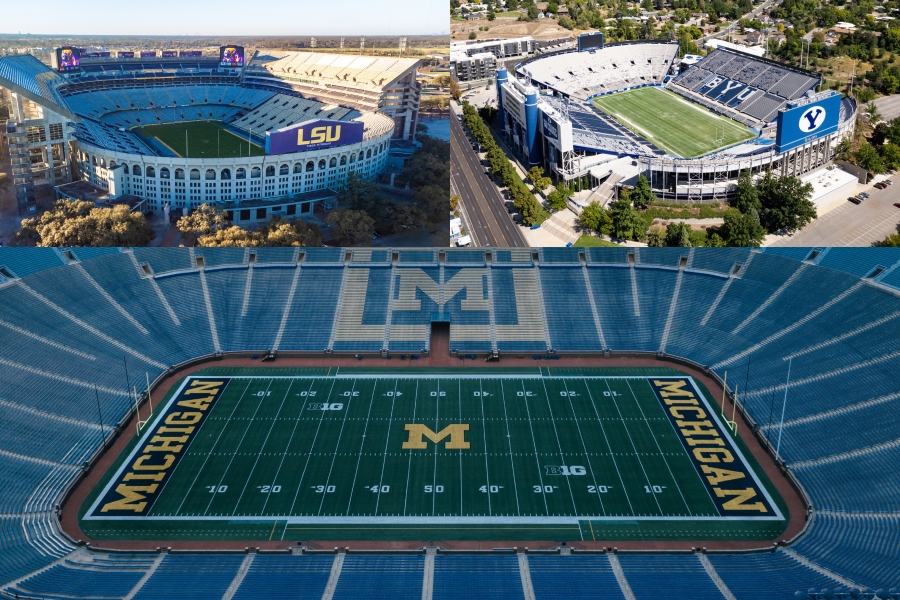Henry Gifford is nothing if not blunt, and when discussing building science, he doesn’t mince his words: “Almost nobody understands it,” he says.
It was this characteristically candid recognition that prompted Gifford to write his first book, “Buildings Don’t Lie,” a guide for all things under the umbrellas of building construction and building science, including such essential areas as airflow, moisture, light, heat and sound. The book is remarkably robust: It clocks in just shy of 600 pages. It’s also written with a broad readership in mind: Gifford fills the pages with full-color photographs, diagrams, graphs and quizzes. This makes for an informative yet surprisingly easy read.
It’s just the latest in a long line of achievements for Gifford, who rose to prominence as a New York City-based designer of heating, cooling and ventilation systems. Gifford’s also gained the reputation as a sort of philosopher king of building design. He has, at various points in his life, led guided tours of boilers in the Big Apple (a gig that earned him a fawning profile in “The New Yorker”) and performed a one-act play about energy efficiency in New York’s Center for Architecture. He’s also sued the U.S. Green Building Council on claims of false advertising related to its LEED certification program (a case he lost). In an industry of pragmatists, Gifford possesses a rare artist’s touch. Most recently, he’s been teaming up with architect Chris Benedict. They designed New York City’s first rental building to meet passive house standards, and they continue to be pioneers in energy-efficient buildings across the region.
Gifford spoke with the Bluebeam Blog about “Buildings Don’t Lie,” the difficulties of designing a garage for a car collector, and his problem with most architecture classes.

Bluebeam Blog: Who was your intended audience when you set out to write “Buildings Don’t Lie”?
Gifford: People who have any influence on buildings, which is pretty much everybody. I want people who live in buildings to enjoy them all by understanding them better. I want people to do a better job of designing them when they build new. I want people to make more informed decisions when they decide what to do with a building they own, like if somebody’s renovating or thinking to renovate, or wondering how to save energy and want to know what to do.
I want people to make more informed choices about improving the health of people inside buildings. That includes people who work and live in buildings, people who take care of those buildings, people who design the buildings.
Bluebeam Blog: You start the book by going over some building science: The difference between conduction, convection, radiation, a discussion of vapor diffusion, and so on. Do most people in the field properly understand this science?
Gifford: No. Almost nobody understands it.
Bluebeam Blog: Can you give me an example of how that ignorance might manifest in the building process?
Gifford: It’s a problem to simply insulate buildings. Everybody wants to be more comfortable, so people say, “Okay, let’s add more insulation,” but it’s not inherently safe to add insulation to a building. For example, if you add insulation to the walls, the outer side gets colder in the winter, which can cause problems with water—condensation in some climates, and in any climate, the rain takes longer to dry because there’s less heat available.
In the case of adding more insulation on the floor of an attic, you make the attic colder. You think, “Well, that’s great because I don’t need to pay to heat the attic.” Well, there’s a problem there. When warm, humid air leaks up into the attic, if the underside of the roof deck is warm, there will be little or no condensation on the underside of the roof deck. But if the attic is cold, when that warm, humid air leaks from the house up into the attic, condensation forms on the underside of the roof deck, and the roof deck rots away. The more insulation that’s added, the more this is a problem.
Bluebeam Blog: How did you find these solutions outlined in the book?
Gifford: Understand the science. Understand the science underneath how it works.
Buildings are kind of simple when you get the science. But before you get it, it’s pretty hopeless to memorize in advance what to do in certain situations. Materials are constantly changing, the budget changes, you have different climates. You can’t memorize all the solutions to all the possibilities. It’s necessary to understand the underlying science.
That’s why I wrote my book: the first chapter, “What Is Heat? How Does Heat Work?”; second chapter, “Heat in Buildings. Heat Movement Through Buildings.” You can’t get the second one without having the first one.

Bluebeam Blog: Are architecture classes properly training students at all in this science? Or are they lacking in that regard?
Gifford: Architecture schools are a horrible nightmare in this regard. I work for an architect named Chris Benedict, who went to Cooper Union, which is a great school. It has a five-year BA program. And she had one technical class in the five years. One class that bordered on technical. It was called “Environmental Systems.” And it was heating and cooling, but they didn’t call it that because they don’t want to be blue collar. They don’t want to be too technical. It’s kind of like art school. In architecture school, you learn about design, you learn little or nothing about construction, you get on a construction site and you don’t know how to nail a 2×4.
So in the back of my book, I recommend how architecture schools should require as a credit a requirement that architecture students work on a construction site in the summer.
And the system kind of rewards vagueness. And so there’s not much incentive for people to learn. The schools don’t teach it. Engineering schools are similar. Engineers should go gather some pipes and run some wires for a summer. Engineers are really good at choosing equipment from catalogs, but they’re not good at understanding how that equipment interacts with buildings. The architects and the engineers don’t talk nearly enough.
Bluebeam Blog: What’s your next project?
Gifford: I’m sort of recovering from the book, doing a little construction work. I’ve owned a few rental houses in Texas for many years, and I can now fix some stuff up.
And meanwhile, we’re doing a single-family home up on the beach in Long Island, 15,000 square feet. And maybe 40% of the property is a 30-car garage. The guy collects old cars, he’s got an elevator to bring a different car into his den each week. Picture building a basement that can park 30 cars, and there’s no columns. No support columns anywhere, because you don’t want to back your ’55 Chevy into a pole, you know? So that house has a lot of steel in it.
And the boilers that heat the house in the winter and heat the faucet water all year, they also do snow melting in the winter. And they also heat the pool in the summer. So, with the boilers there’s a lot of capacity left over in the summer. So we said, why have a pool heater? Why buy that piece of equipment? Why maintain it? Why have another circuit board and another pilot light and another igniter to fix? Just use what we already have. This is higher efficiency. And so the boilers will heat the pool better. And they were going to have electric snow melting system, but that’s just so much energy, and the bigger wire and the grid is about 31-32% efficient. Meaning, they burn some gas up the street, somewhere at the power plant. And then you get about a third of it into your driveway. This way, we will burn the gas and get about 90% of it into the driveway. I hate using energy that way, but it’s probably better than any other option.











